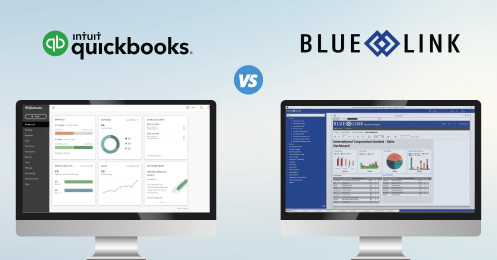Imagine running your business like a well-oiled machine, where cash flow keeps everything in motion. It’s the element that fuels growth, pays your team, and ensures you can seize opportunities when they arise. But cash flow doesn’t just happen; it hinges on maintaining healthy profit margins—making sure that what you earn comfortably exceeds what you spend. This balance gives you the breathing room to navigate challenges and plan for the future, but it all starts with getting your pricing right and controlling costs.
Accurate pricing and cost control extend beyond mere number-crunching; they involve a deep understanding of your entire operation. This is where job costing becomes essential. By systematically monitoring the costs of materials, labor, and overhead for each project, job costing delivers the insight required to price jobs accurately and manage expenses effectively. It transcends traditional accounting, serving as a strategic tool that safeguards your profit margins and maintains strong cash flow, steering your business toward sustainable success.
What is Job Costing?
Job costing is a method used to accumulate costs associated with a specific job or project. Its primary purpose is to track project-specific expenses, enabling businesses to determine the profitability of each project. By allocating costs accurately, job costing offers a clear view of financial performance, facilitating informed decision-making and enhanced project management.
Breaking Down Job Costing: The Essentials You Need to Know
Job costing is about understanding a project's true cost by breaking it into core components. By closely monitoring these elements, businesses can gain a clearer view of their expenses, leading to better budgeting, pricing, and financial management. Let’s explore the essentials of job costing:
Direct Costs: The Tangible Project Expenses
1. Labor
Labor costs include wages for everyone working on a project, from full-time staff to subcontractors. To determine these costs, multiply each worker’s hourly rate by the number of hours they work and then by the number of days they work. This method ensures every hour is accounted for, helping you track the most direct and substantial project expense.
2. Materials and Equipment
This includes everything necessary to complete the project. Direct material costs cover raw materials that become part of the final product, while indirect material costs involve essential tools or machinery. Be it construction wood or design software, each material and piece of equipment contributes to the project. Calculate this by totaling all direct and indirect costs to get a complete picture of your material investments.
Indirect Costs: The Hidden Drains on Your Budget
1. Overhead
Overhead costs are the unseen forces behind every project. Though not tied to a specific job, they are essential to keep operations running smoothly, such as utilities, rent, and administrative salaries. These costs are vital to your operations and are a key part of your job cost calculations.
2. Miscellaneous Expenses
Beyond the obvious, there are additional costs that can unexpectedly arise, like travel expenses, meal stipends for field workers, or security costs for the site. These often overlooked expenses can quickly accumulate and should be included in your project’s total cost to prevent surprises.
3. Burden Costs
Burden cost captures the additional, labor-specific indirect costs beyond direct wages, such as payroll taxes, benefits, workers' compensation, and other employee-related expenses. These hidden costs directly associated with employing staff are applied to direct expenses, ensuring that the true cost of labor is recognized in job costing. This differs from overhead costs, which are broader and cover general business operations.
Job Costing Formulas: Calculating the True Cost of Your Projects
Job costing is more than just crunching numbers—it’s about understanding all the costs involved in your projects. With the right formulas, you can accurately track expenses, set better budgets, and price your jobs effectively. Here’s a simple guide to the key job costing formulas and what they mean for your business.
1. Total Job Cost: Capturing All Project Expenses
Formula:
Total Job Cost = Direct Materials + Direct Labor + Applied Overhead + Burden Cost (Optional)
This formula calculates the complete cost of a job, including direct materials, direct labor, applied overhead, and burden cost. The inclusion of burden cost ensures that indirect expenses are factored into your total job cost, providing a true picture of overall expenses.
2. Direct Materials: The Specific Costs of Project Inputs
Formula:
Direct Materials = Cost of Raw Materials + Supplies Used
3. Direct Labor: Calculating Workforce Effort and Cost
Formula:
Direct Labor = Hours Worked × Employee’s Labor Cost Rate
4. Applied Overhead: Allocating Indirect Operational Costs
Formula:
Applied Overhead = Overhead Rate × Actual Activity Base
Actual Activity Base Explanation:
The activity base is a measure, such as the number of hours worked or units produced, representing how resources are consumed by a project. It’s chosen based on the job type and helps distribute overhead fairly.
5. Overhead Rate: Distributing Indirect Costs Across Jobs
Formula:
Overhead Rate = Total Overhead Costs / Total Activity Base
Total Overhead Costs Calculation:
Total overhead costs are determined by summing all indirect costs that keep the business running but aren’t linked to any single job. This calculation ensures these operational costs are reflected across all projects.
6. Burden Cost: Accounting for Hidden Indirect Costs
Formula:
Burden Cost = Indirect Costs / Direct Costs
Calculating Indirect and Direct Costs:
- Indirect Costs: Include items like payroll taxes and benefits directly linked to labor.
- Direct Costs: Cover expenses directly tied to the project, such as materials and wages.
7. Total Burdened Cost: A Full View of Job Expenses
Formula:
Total Burdened Cost = Direct Cost + (Direct Cost × Burden Rate)
This formula combines direct costs and burden costs, providing a comprehensive view of all job-related expenses, including the full labor burden. It’s a crucial figure that captures the complete financial impact of a job, distinguishing labor-related costs from broader overhead.
Burden Rate Calculation:
The burden rate is calculated by comparing labor-specific indirect costs to direct costs, representing the extra costs that employee-related expenses add to the project.
Example of Job Costing Calculation
Consider a distribution business selling packaged food, focusing on a large restocking project in their warehouse. Here's how job costing helps manage the varied expenses, ensuring everything is tracked accurately.
Step-by-Step Job Cost Calculation
1. Direct Labor Cost Calculation: The Workforce Behind the Operation
A team of 10 warehouse workers is dedicated to the project, each working 8 hours a day at $25 per hour for 20 days.
Direct Labor = 10 workers × 8 hours/day × $25/hour × 20 days = $40,000
2. Direct and Indirect Material Cost Calculation: Equipment and Supplies
The restocking requires direct materials like packaging supplies and pallets, and indirect materials such as forklifts and safety gear.
Direct Costs: $80,000 (packaging, pallets)
Indirect Costs: $20,000 (forklifts, safety equipment)
Total Material Cost = $80,000 + $20,000 = $100,000
3. Applied Overhead Cost Calculation: Allocating General Business Expenses
Overhead costs, including warehouse rent, utilities, and administrative expenses, are allocated at 15% of combined labor and material costs.
Applied Overhead = 15% × ($40,000 + $100,000) = $21,000
4. Burden Cost Calculation: Capturing Hidden Indirect Costs
Burden costs account for additional indirect expenses like insurance and maintenance, using a burden multiplier.
Assume Burden Rate = 10%
Burden Cost = Direct Costs × Burden Rate = ($40,000 + $100,000) × 10% = $14,000
5. Total Job Cost Calculation: Combining All Project Costs
Combine direct labor, material, applied overhead, and burden costs to find the total job cost.
Total Job Cost = $40,000 (Labor) + $100,000 (Materials) + $21,000 (Applied Overhead) + $14,000 (Burden Cost) = $175,000
The Power of Job Costing: Why It’s More Than Just Numbers
Job costing is more than just a financial tool—it's key to making smarter decisions and managing risks in any project-focused business. Think of it as a magnifying glass that reveals exactly where every dollar is going, spotting inefficiencies and helping you reallocate resources effectively. By adopting job costing, businesses can set more precise pricing, improve forecasting, and ultimately boost profitability.
Enhancing Job Costing with Accounting Software
Integrating accounting software with job costing transforms it from a manual chore into a powerful automated system. Project accounting software simplifies complex projects by breaking down labor costs and automating tasks like revenue recognition. This shift makes job costs more dynamic and insightful, which is ideal for businesses seeking a competitive advantage.
Unlocking Additional Benefits of Accounting Software for Job Costing
Speedy Estimations: Accounting software streamlines job costing by utilizing historical data, from material costs to labor rates on previous projects. It lets you categorize estimated expenses, delve into detailed costs at each stage, and gain a complete view of your project’s financial outlook. When integrated with ERP systems, you can connect data from HR, inventory, and supply chain, offering a holistic perspective.
Precision in Job Pricing: Automated job costing software applies predefined rules to allocate costs accurately and consistently to projects. This allows you to differentiate costs for various project components, like marketing or sales, ensuring pricing reflects the actual work completed.
Minimize Customer Conflicts: Accurate cost tracking leads to realistic pricing estimates, setting clear expectations for clients. The software's ability to update costs in real-time throughout a project allows you to share expense details as they arise, keeping clients informed and reducing the likelihood of disputes.
Real-Time Cost Insights: Real-time reporting is transformative for job costing. With immediate insight into labor, materials, and overheads, you’re not just reacting to costs after they occur—you’re proactively managing them. Track costs as they arise, adjust mid-project, and ensure you meet financial targets without surprises.
Job Costing in Blue Link ERP
One of the key features of Blue Link ERP is its job costing functionality, which helps businesses manage project expenses with precision and clarity. Job costing in Blue Link ERP allows companies to track direct and indirect costs associated with specific jobs, from labor and materials to subcontracting and overhead. By assigning expenses to General Ledger (G/L) accounts, Blue Link ERP categorizes financial transactions into specific groups, such as labor, materials, and other project-related costs. This enables detailed expense tracking and accurate financial reporting, ensuring businesses maintain tight control over their budgets and project profitability.
Blue Link ERP’s job costing capabilities go beyond just recording costs; they help businesses optimize their resource allocation and decision-making. For example, the burden percentage feature captures indirect costs, like benefits and taxes, which are often overlooked in traditional costing methods. This provides a more complete picture of project expenses, aiding businesses in pricing and cost management. With tools to create and manage job estimates, allocate inventory, and record labor costs, Blue Link ERP empowers companies to adjust quickly as project scopes evolve. Additionally, its comprehensive reporting features, such as Job Cost Analysis and Profit and Loss reports, allow companies to compare actual costs to estimates, identify variances, and make informed decisions for future projects. These capabilities make Blue Link ERP’s job costing a valuable tool for businesses looking to streamline their financial operations, maintain a healthy cash flow, and improve overall project efficiency.
So, Blue Link ERP’s job costing feature can:
- Integrate with sales orders, purchase orders, accounts receivable, and payable
- Create estimates and track changes via change orders
- Compare estimates with actual-to-date costs and report variances
- Provide job profit and loss and detailed cost reports
- Track employee costs directly to jobs through timecard entry, with optional Payroll integration
- Allocate inventory (and related costs) directly to a job as used
FAQs
Why do businesses need detailed job costing?
Detailed job costing helps businesses understand costs at a granular level, which is crucial for accurately pricing projects, avoiding cost overruns, and identifying inefficiencies. This level of detail ensures that every job is profitable, and resources are used effectively.
How does job costing help with accurate pricing and cost control?
Job costing helps businesses accurately price jobs by providing visibility into all associated costs, ensuring that prices cover expenses and maintain competitiveness. It also supports cost control by highlighting areas where expenses can be reduced, protecting profit margins.
What is the difference between overhead expenses and burden costs?
Overhead expenses are the fixed or indirect costs necessary to run a business, such as rent, utilities, and administrative costs. These expenses are not directly tied to service delivery but are essential for business operations. On the other hand, labor burden refers to the full cost incurred for employees beyond their salary, including payroll taxes, benefits, and other employee-related costs. While labor burden can sometimes be grouped under overhead, it is often treated separately in job costing because it directly impacts the cost structure of specific jobs, reflecting the true cost of labor and aiding in accurate pricing and profitability analysis.










